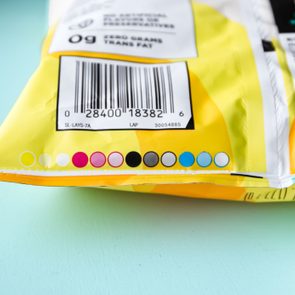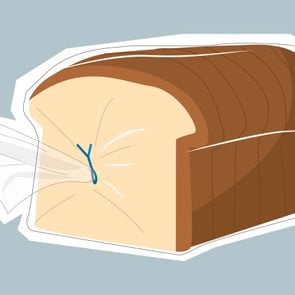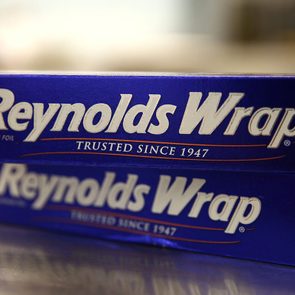This Is What the Code on Your Milk Jug Means
Updated: Jun. 25, 2024

Moo-ve over expiration dates. There's another important code on your milk carton.
If there’s a cardinal rule of grocery shopping, it’s this: Always check the sell-by date before buying milk. It’s usually easy to spot, printed toward the top of the milk carton in black letters. And it’s what saves us from doing the sniff test the minute we get our milk home from the store. (We save that for Week 2, naturally.)
But did you know there’s another important number—sort of like a “secret” code—printed just beneath the sell-by date? If you’ve never noticed it before, you certainly will now. Like milk label colors (which also have secret meanings!), this string of numbers might just change the way you shop for milk from here on out. Read on to learn what it means and how to find it on your next gallon.
Get Reader’s Digest’s Read Up newsletter for more food news, humor, travel, tech and fun facts all week long.
What do the numbers on your milk jug mean?
Here’s a fun fact: Those seemingly random numbers near the top of your milk container are not arbitrary at all. Usually located just beside or beneath the sell-by date, they’re a little-known code that tells you where the milk was bottled before it was delivered to your grocery store.
Pay attention, and you’ll spot these codes on other dairy products too. The numbers are printed on containers of butter, cottage cheese, yogurt, ice cream and more.
How do you decipher the code?
The code on your milk may seem like a jumble of numbers at first, but it’s actually a smart and easy-to-follow system if you know how to read it. Here’s how to interpret those numbers:
- Find the secret code, which is usually near the sell-by date. Hint: It always begins with two numbers followed by a dash and ends with a series of one to five additional numbers and/or letters. It will typically look like this: 01-2345 or 01-23.
- Visit Where Is My Milk From and type in the code.
- Voila! You’ll see exactly where your milk was bottled.
Curious how those numbers can point to the diary that produced your milk? Let’s break it down: The first two numbers, which range from 01 to 56, indicate the state where your milk came from. The series of numbers (or numbers and letters) after the dash tells you the dairy farm it came from.
Why is it important to know where your milk came from?
Sometimes knowing where your milk was bottled before it made its way to your fridge is just fun, pure and simple. This is doubly true for kids. Just think of how a child’s imagination could run wild thinking about their moo juice’s journey from the dairy farm to the grocery store to their cookies-and-milk dessert.
And both adults and kids may find it interesting to learn whether their milk was sourced from a local farm or came from another state.
But there’s another reason you may be interested in where your milk originated, especially if you try to stick to an organic diet or prefer to purchase organic dairy. According to the Cornucopia Institute, a nonprofit organization focused on finding the truth behind organic agricultural practices, not all farms that claim to use organic practices abide by the rules as strictly as they should. Paying attention to the supply chain of your milk can help you avoid purchasing products from farms that use industrialized practices that strip away healthy fats.
Do these numbers have anything to do with the milk’s expiration date?
The code that tells you where your milk was bottled usually appears beside the milk’s sell-by date, so does it have anything to with how long a carton of milk will last? Nope! The two numbers are unrelated.
Milk bottled at any location can have any expiration date. It all depends on when it was produced.
What if my milk doesn’t have a code?
If you can’t find the code on your container of milk, don’t worry. Not all dairy products have codes. Sometimes this is because the product is dairy-free—you won’t find this code on oat milk or almond milk, for instance.
Another reason you’re looking at a codeless carton of milk? It was produced at a new dairy farm that has not yet been added to the Where Is My Milk From database.
In short, this code isn’t essential, but if it appears on your carton, it can provide useful info and fun insight into your milk’s journey to your refrigerator.
Sources:
- The Cornucopia Institute: “Watch That Milk Plant Code!”
- Cornell University: “Where Is Your Milk From?”



